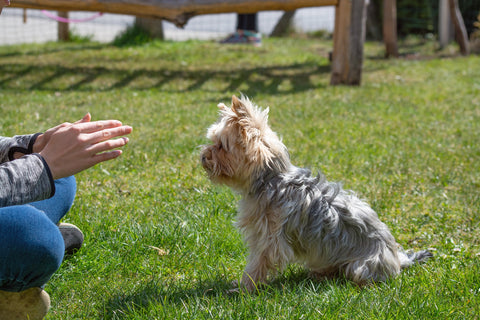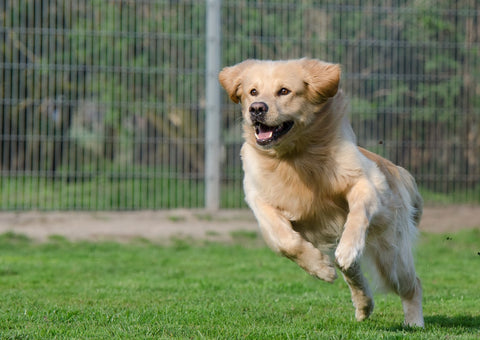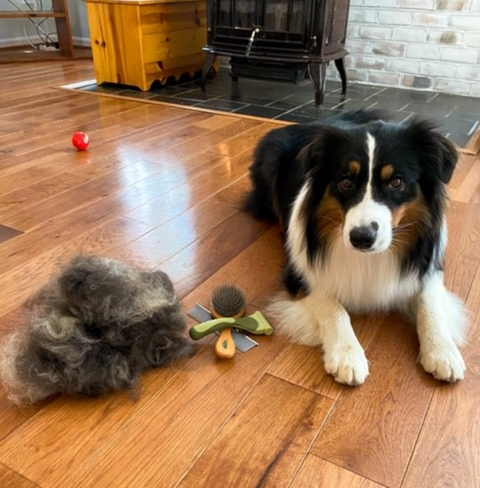Boundary training is a foundational step to help your dog build value for being calm and relaxed, by rewarding them for it! To start with, you need to select something you want to use as a boundary. This can be a raised bed, a folded blanket, a dog pillow, etc. The important thing is that it needs to be visually distinct from the ground it’s sitting on.
Once you’ve selected a boundary, bring the boundary, your dog, and treats or kibble (this is a great way to feed your dog part or all their dinner), to your training space. Put the boundary down and feed your dog one piece of kibble or one treat when they sniff the boundary. Then place one piece of kibble on the boundary for your dog to eat. Continue doing this, slowly and one piece at time. If your dog puts 1 or more feet on the boundary, make sure to heavily praise it by giving them lots of treats and “good dogs” and pets (if they respond well to loving). This helps them to associate the boundary, and being on the boundary, with happy, tasty, and fun times.
It is important while introducing the boundary to your dog to try to avoid luring or cuing them on to the boundary. The idea is you want your dog to want to be on the boundary, not just go up there because you told him or her to. By not cuing or luring them, you are giving your dog the opportunity to make the decision themselves, which is important for building value in them for the boundary. This concept can be fairly challenging for us as owners to handle, as it often requires a lot of patience on our part to not make it easy for our dogs. But if you can stick it out, it’s worth it!
Just be patient and reward the small behaviors your dog is offering you, including sniffing or putting one foot on the bed. Once your dog is offering one small behavior consistently, then you know you can expect a little more. For example, if your dog keeps sniffing the bed and eating a treat, place the treat a little further from your dog so they have to reach for it, and possibly put one foot on the bed to get it. These are small behaviors but are the building blocks to get your dog to the big behavior you really want.
Eventually, you want to have your dog put all four feet on the bed. Once he or she does, keep slowly giving them pieces of kibble or treats. The slow dispense of food is important for keeping you and your dog in a state of low arousal. Over time, you’ll be able to increase the time between piece of kibble.
After your dog has been on the boundary for a short while (30 seconds – 1 minute) you need to release them, by saying your release cue (e.g. break, okay, release) and throwing a piece of kibble away from the boundary so they jump off. Relative to your environment, they will likely come back to you to try and get some more kibble. Repeat the above process.
It is important that your dog doesn’t leave the boundary without your cue. This requires you to balance encouraging the desired behavior (staying on the boundary) and your dog’s attention span. If your dog starts getting wiggly or distracted, they are indicating to you they need a break, and you should cue them to release before they do it themselves. The more you practice, the longer your dog will be able to go between breaks.
If you stick with this process, your dog will learn to get right on the bed when he or she comes back to you without hesitation. But be patient with your dog and give them time to figure it out. You want them to understand what’s expected and make the decision to get back on the bed.
Eventually, you can add a cue to this behavior and use it when you want your dog to lay calmly in a place. By building value for the boundary and the calm behavior on the boundary, your dog will want to be on the boundary! Happy training!
























